Jane Jacobs
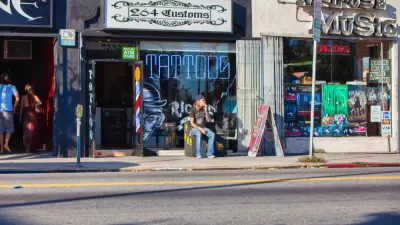
An Expanded Approach to the Analysis of Cities
Even with so much data in the world, cities are a slippery subject. What if an everyday part of life in cities—the "scenes" comprised by businesses, people, and practices of similarly distinct aesthetics—can help our understanding?

Who Is Robert Moses?
Known to some as the 'master builder' and to others as a villain in the history of New York City's development, Robert Moses was an influential and controversial city official who guided the construction of hundreds of projects in the mid-20th century.

Looking Beyond the 'Sidewalk Ballet:' Jane Jacobs in the 21st Century
While The Death and Life of Great American Cities remains an urban planning classic, today's planners must contend with challenges that Jacobs couldn't have anticipated.
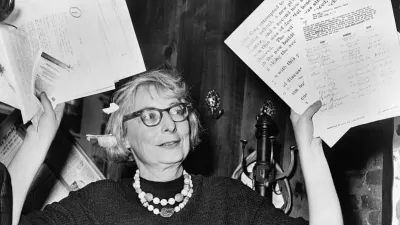
Deconstructing Saint Jane
The iconic urban thinker has influenced generations of planners, but how do her ideas hold up in an age of massive upheaval and economic inequality?

The Urban Project: Urbanization, Urbanisms, and the Virus—A Historical Take
Perceptions of what makes density either "good" or "bad" have shifted over the years, and the pandemic is likely to precipitate another shift.

What Can Brain Science Tell Us About Cities?
Cities are not unlike brains in their capacity to evolve along complex, self-organizing patterns. Studying what some researchers call the "urban connectome" may give us insight into how best to organize the places where we live.

Comic Illustrates the Capitalist Co-option of Jane Jacobs's Teachings
A new illustrate comic strip published by the Nib examines "Jane Jacobs vs. The Power Brokers."

It's Organic! The End of Conjecture and the Science Ahead
The history of inquiry into the "organic" nature of cities has revealed findings that inform the practice of urban planning.

New Urbanism and Jacobs: A Tangled Disconnect
New Urbanism was in part born of the criticisms of 20th century planning principles popularized by Jane Jacobs, but Jacobs infamously derided the new school of thought.

A Sprinkle of Stores: Wrestling With Jacobs's Uncertainty
Jane Jacobs used vague terms to describe the number of stores necessary for a safe and vibrant streetscape. Here, author Fanis Grammenos attempts to discover a more specific number to attach to this prescription.

Birds of Passage: Quantifying Jacobs's Gloom
While the debate continues unabated on the influence of the physical and land use characteristics of a city on crime, a critical aspect is left out: resident transience. Jacobs took notice and feared its negative influence. Was she right?
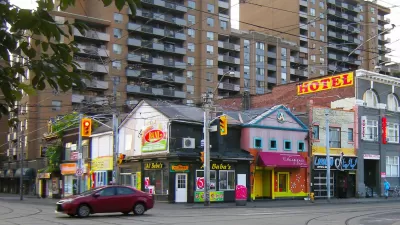
Eyes from the Street – A Finer Filter
Evidence described here suggests that urban design for "eyes on the street" is not enough to lower crime.

Eyes from the Street: The Neighbourhood Fabric that Matters
The mantra “eyes on the street" focuses on the physical and functional traits of urban fabric but fails to explain the high crime rate of my Jacobsian neighbourhood. Time to reconsider, look for explanations, and exchange mantras for research.
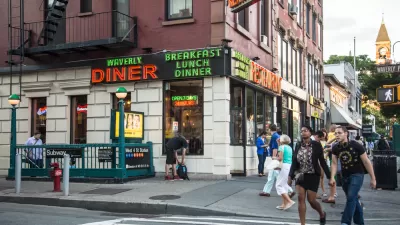
The Lessons Jane Jacobs and Christopher Alexander Still Have to Teach
Robert Steuteville reviews Cities Alive, by Michael Mehaffy, describing the newly released book as "an important analysis for urbanism."

Study: 'Eyes on the Street' Have Real Value for Neighborhood Safety
The first study to make an attempt at quantifying the value of "eyes on street"—an idea most eloquently described by Jane Jacobs—offers reason to support a mix of uses, with businesses operating later in the evening.

CNU 25 Seattle: Highlights from the Silver Anniversary
A summary of last week's events in Seattle: CNU 25 and ULI, written by Hazel Borys.

'Citizen Jane' Sets the Battle Lines for the Future of Cities
Coinciding with the 101st anniversary of Jane Jacobs's birth, a documentary film showing in select theaters around the country recounts the history between Jane Jacobs and Robert Moses, and the ideas that forced their struggle.
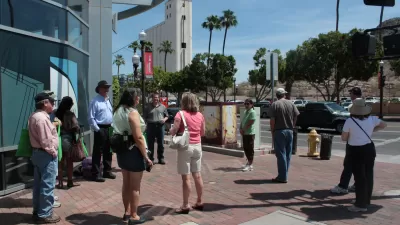
The 'Jane's Walk' Tradition Continues
In honor of the pioneering urbanist, who would have been 101 years old this week, citizens are organizing "Jane's Walks" in cities across the globe.

Reviews for 'Citizen Jane: Battle for the City'
Two publications likely to find an audience with people sympathetic to the cause of Jane Jacobs reviewed the latest film about her political battles with Robert Moses for the soul of New York.

100 Years After Her Birth, Jane Jacobs Might Not Recognize New York
Sam Hall Kaplan reviews "Eyes on Street: The Life of Jane Jacobs" and offers insight gained from personal experience with the "Saint of City Planning."
Pagination
Urban Design for Planners 1: Software Tools
This six-course series explores essential urban design concepts using open source software and equips planners with the tools they need to participate fully in the urban design process.
Planning for Universal Design
Learn the tools for implementing Universal Design in planning regulations.
Heyer Gruel & Associates PA
JM Goldson LLC
Custer County Colorado
City of Camden Redevelopment Agency
City of Astoria
Transportation Research & Education Center (TREC) at Portland State University
Jefferson Parish Government
Camden Redevelopment Agency
City of Claremont


































